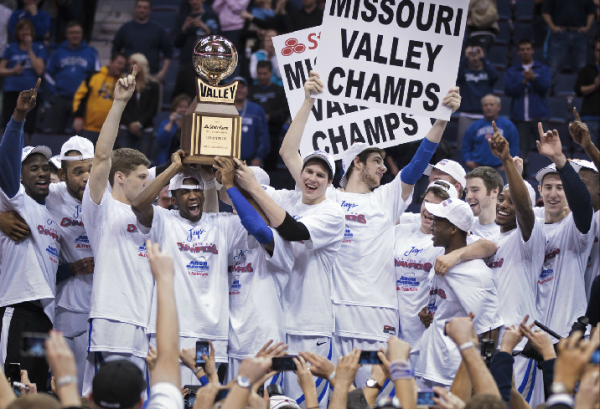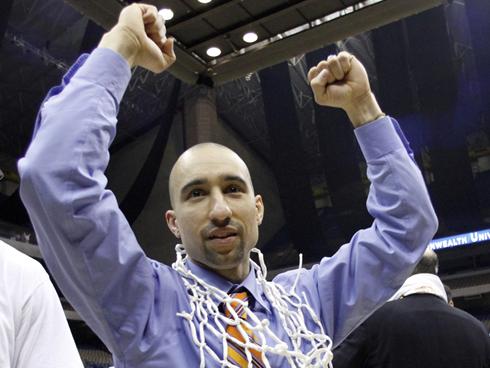Bracket Prep: Creighton, Loyola (Maryland) & VCU
Posted by EJacoby on March 6th, 2012As we move through Championship Week (the second half of Championship Fortnight, of course), we’ll continue to bring you these short reviews of each of the automatic qualifiers to help you fill out your bracket next week. In this post, we’ve got the MVC, MAAC, and CAA champions ready to go…
Creighton
- Missouri Valley Champion (28-5, 17-4)
- RPI/Pomeroy/Sagarin = #21/#35/#24
- Adjusted Scoring Margin = +10.5
- Likely NCAA Seed: #5-#7
Three Bruce Pearls of Wisdom.
- With Creighton’s MVC Tournament victory over Illinois State on Sunday, the Bluejays sit at 28 wins and are just one win away from tying the most in its history. Given that Greg McDermott’s team has one of the best players in the country along with a talented and experienced group of complementary players, it’s not inconceivable that the school could reach 30 wins to break the record. Should Creighton advance to the Sweet Sixteen for the first time since 1974, it would represent the culmination of a year that CU fans, some of the best in college basketball, have dreamed of for some time. This team is capable of getting there.
- The primary reason they’re capable has a lot to do with the scoring wunderkind known as the coach’s son, Doug McDermott. The sophomore wing can quite literally score from anywhere on the court — his 23.2 PPG includes a ridiculously efficient 61.2% field goal percentage (49.5% from three) and he has an array of moves by which he finds open looks all over the floor. The offense quite clearly runs through him, but his supporting cast of guard Antoine Young (12.5 PPG, 4.5 APG) and Gregory Echinique (9.8 PPG, 7.4 RPG) provide additional punch when needed.
- The problem for Creighton lies with its defense. Contrasted with an elite offensive unit (#5 nationally), the defense is downright ugly (#186 nationally). Creighton could arguably end up with the biggest disparity between the two ends of the court in the entire tournament field, excluding a crazy #16 seed perhaps. This means that matchups for the Bluejays are exceptionally important because they will only win by outscoring another team, not by stopping them. Ideally, Creighton would find itself in a first game matchup against an equally bad defensive power conference team such as Northwestern or Mississippi State. Getting past that one, they’d then face a team like Florida or even Duke to give themselves a fighting chance to get into a gunner’s delight showcase with the other team. If Creighton, however, sees a team like Wisconsin or Georgetown up ahead, they’re going to have trouble breaking through for that elusive 30th win.
VCU
- Shaka Smart Has VCU Back in the Big Dance (AP Photo/T. Gutierrez)
- CAA Champion (28-6, 18-3)
- RPI/Pomeroy/Sagarin = #57/#46/#50
- Adjusted Scoring Margin = +4.7
- Likely NCAA Seed: #12-#13
Three Bruce Pearls of Wisdom.
- The personnel of this year’s Virginia Commonwealth team is much different than that of last year’s Final Four squad, as just one starter remains from that team and its incredible Cinderella story. But the style of play is much of the same this year under coach Shaka Smart. VCU plays at a moderate offensive pace but loves to utilize its high-pressure defense to force turnovers, and the Rams thrive on shooting three-pointers to score. VCU leads the CAA in three-pointers made and leads the country in steals per game (10.6), hence the style being known as “havoc.” This team rebounds and shares the ball collectively without relying too much on any one player in those facets of the game.
- The heart and soul of this team is Bradford Burgess, the lone senior and remaining starter from last year’s squad. Burgess averages 13.3 points per game, makes over two three-pointers per contest, and shoots about 80% from the foul line. Six other players play at least 18 minutes and score at least five points per game, and everyone that plays significant minutes is 6’2” or taller. This team won’t have any significant athletic disadvantage, though the question becomes on whom it can rely on to score consistently outside of Burgess if the three-balls are not falling.
- VCU is a perpetual matchup problem simply based on its unique style of play. “Havoc” is a style that can be exploited by disciplined teams that are strong with the ball and don’t get rattled, but the Rams also possess the ability to hit threes at a high rate to keep themselves in any game. With just one senior this year, it’s unlikely that VCU can make another extended run to reach the Sweet Sixteen or beyond, but this is still a team that will be a nightmare to prepare for. They could be a popular upset pick in a #4-#13 game, depending on which team they match up with.
Loyola (MD)
- MAAC Champion (24-8, 16-5)
- RPI/Pomeroy/Sagarin = #77/#133/#137
- Adjusted Scoring Margin = +2.7
- Likely NCAA Seed: #15
Three Bruce Pearls of Wisdom.
- Loyola (Maryland) is a surprise winner of the MAAC, considering Iona was the heavy favorite in the conference tournament and Fairfield was a three-point favorite in the championship game. Exuberant head coach Jimmy Patsos is the most well-known part of this team, as only one of its top seven players is a senior. However, Loyola finished second in the MAAC regular season race and the Greyhounds are a smart team that plays tough inside. They rank in the top 40 nationally in free throw rate, offensive rebound percentage, and block percentage. They sport just average offensive and defensive efficiency stats, but they do the little things well that got them through to the NCAA Tournament.
- Erik Etherly and Dylon Cormier are the Greyhounds’ two leading scorers, both at around 13.4 points per game, but three other players also contribute 9.1 per contest. This team doesn’t shoot a lot of threes or pile up many assists, but instead it thrives on collective defensive effort and getting to the free-throw stripe. Five of their top seven guys shoot 73% or better from the foul line, with the other two just under 70%. Etherly leads the team in scoring, rebounding, blocked shots, and field goal percentage, but none by a wide margin.
- Loyola doesn’t have the elite athletes to compete with the #1 or #2 seed it is likely to be matched up against, but the Greyhounds could make things interesting if they continue to play smart and try to prevent their opponent from scoring easy baskets. Loyola has a strong RPI thanks to its fairly challenging non-conference schedule that included games against Kentucky, St. Bonaventure, Bucknell, Wake Forest, and others. Loyola played eight top-150 RPI teams this year and compiled a 4-4 record in those contests. Don’t expect this team to upset anyone in its first game, but it could at least pose a challenge and keep things close with a smart game plan.












































